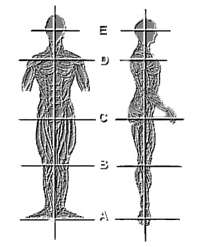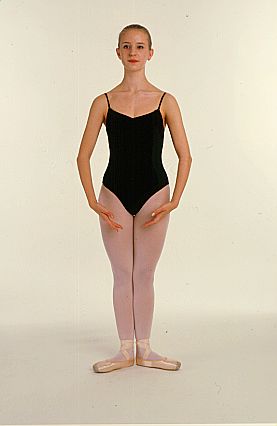In teaching ballet to adults, I don’t expect the new beginners to know any terminology or basic concepts. They are, after all, new. However, I am surprised with the former dancers who are not even a little bit familiar with them. I chalk this up to the American dance studio style of teaching ballet, which has a lot of demonstration and individual correction, but not much explanation of the concepts behind the dance. One of most important concepts (if not THE most important) is aplomb. Are you dancing with aplomb?
When I say this to my students they smile uncomfortably and blink at at me. I’m fairly certain they think I’m talking about a plum.
In English, we are most familiar with the word aplomb meaning to have confidence, composure or self-assurance. Certainly ballet dancers need that. But that’s pretty vague. How do you teach self-assurance? And that’s not really what we’re getting at when we talk about aplomb in ballet anyway.
It’s not?!
 Nope. Because ballet terminology isn’t English. It’s French! And aplomb comes from the Middle French “a plomb,” which means “perpendicularity” (merriam-webster.com). Focusing on this notion of aplomb as perpendicular is going to help you stack your anatomy correctly; instead of having to muscle your way into maintaining a pose or position you simply line it up perpendicular to the floor and gravity works for you instead of against you.
Nope. Because ballet terminology isn’t English. It’s French! And aplomb comes from the Middle French “a plomb,” which means “perpendicularity” (merriam-webster.com). Focusing on this notion of aplomb as perpendicular is going to help you stack your anatomy correctly; instead of having to muscle your way into maintaining a pose or position you simply line it up perpendicular to the floor and gravity works for you instead of against you.
 Think of it this way: If you are stacking blocks and one or more of them are just a little off the center line, it’s going to be hard to keep them from tipping. But if all the blocks are lined up so that the stack is perpendicular to the floor it’s much less likely to topple.
Think of it this way: If you are stacking blocks and one or more of them are just a little off the center line, it’s going to be hard to keep them from tipping. But if all the blocks are lined up so that the stack is perpendicular to the floor it’s much less likely to topple.
 This concept applies to standing on two feet, one foot, on the ball of the foot or tips of the toes. There is a line, perpendicular to the floor, that goes from the crown of your head down your sternum and then ends up in the middle of whatever your foundation on the floor is (e.g., between your heels in 1st position, the middle of your instep standing on 1 flat foot, etc.). When you understand this concept you can self-correct a whole host of errors. You cannot sit into the hip of your supporting leg because your line will no longer be perpendicular to the floor. Your balance will improve greatly for anything that requires you to stand on one foot. That means cleaner arabesques and more solid pirouettes. Interestingly, once you start mastering finding your aplomb on one foot, it won’t really matter what your other leg or arms are doing. You will feel solid and secure in your stance, and that will give a lot more freedom to what you can do with your other limbs.
This concept applies to standing on two feet, one foot, on the ball of the foot or tips of the toes. There is a line, perpendicular to the floor, that goes from the crown of your head down your sternum and then ends up in the middle of whatever your foundation on the floor is (e.g., between your heels in 1st position, the middle of your instep standing on 1 flat foot, etc.). When you understand this concept you can self-correct a whole host of errors. You cannot sit into the hip of your supporting leg because your line will no longer be perpendicular to the floor. Your balance will improve greatly for anything that requires you to stand on one foot. That means cleaner arabesques and more solid pirouettes. Interestingly, once you start mastering finding your aplomb on one foot, it won’t really matter what your other leg or arms are doing. You will feel solid and secure in your stance, and that will give a lot more freedom to what you can do with your other limbs.


Comments are closed